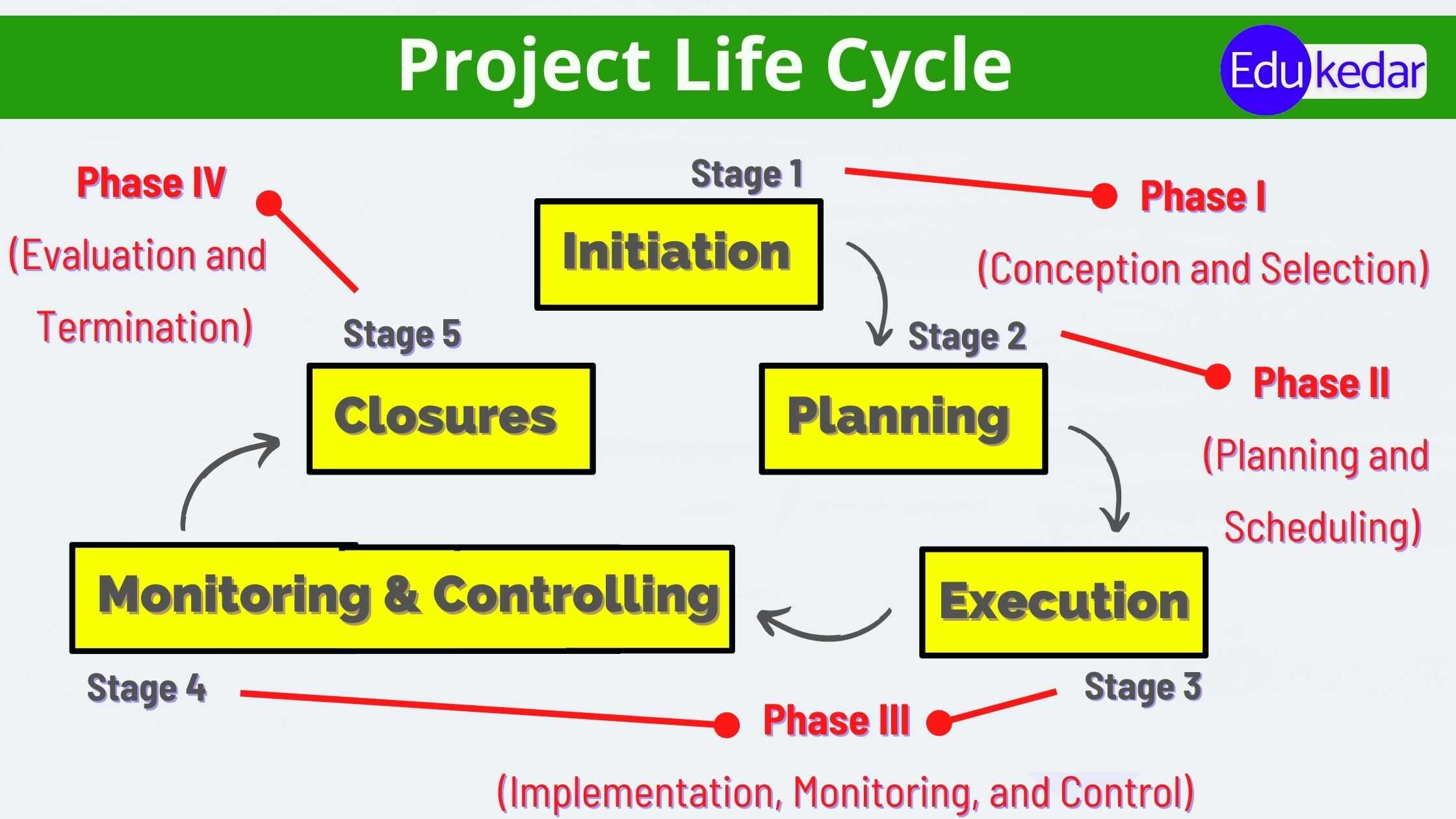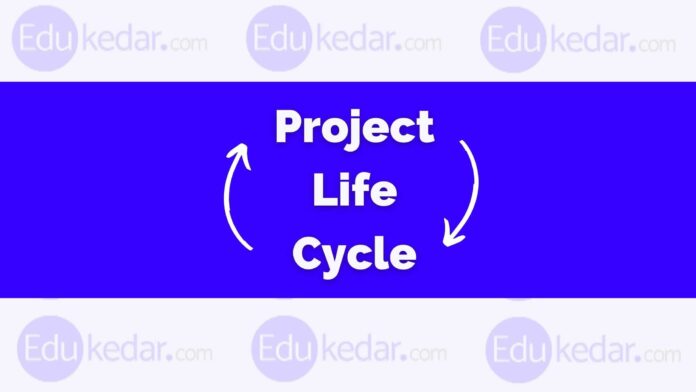Any project is unique in nature and works with the term of the project life cycle. The project manager finds it helpful to use the project life cycle as the cornerstone for managing the project.
The life cycle recognizes that the projects have a limited life span and that there are predictable changes in the level of effort and focus over the project’s life.
Here in this article, we will discuss the project life cycle in a detailed manner. So let’s start with the understanding meaning and definition of the project life cycle.
► What is Project Life Cycle?
Project Life cycle refers to a cycle of a project from the initiation phase to the closing phase.
In order to simplify the management of activities and processes within a project, the latter is broken down into stages or phases, which together form a lifecycle.
The sequence of phases that a project goes through from start to finish. The number and order differ between projects, but will typically be 5 phases focusing: Initiation, planning, execution, monitoring, and closure are the phases of the project.
◉ Project Life Cycle Meaning
- The project life cycle refers to a logical sequence of activities to accomplish the project’s goals or objectives. The management simplifies the process and activities in between, projects are broken down into a series of stages or phases which together form a lifecycle.
- The attention that a project receives isn’t uniformly distributed through its life span but varies from phase to phase. The organization specifies a set of idea systems for use on their projects. While other follows common industry practices based on the types of projects.
◉ Definition of Project Life Cycle
- The project life cycle can be defined as the complexity and uncertainty of projects, organization usually divide the project into phases. Their collection becomes the project life cycle.
Project Life Cycle Diagram

► 4 Phases of Project Life Cycle
Any project goes through a series of stages during its life cycle. These stages go through 4 phases that are as follows;
- Phase I: Conception and Selection
- Phase II: Planning and Scheduling
- Phase III: Implementation, Monitoring, and Control
- Phase IV: Evaluation and Termination
Must Read :What is Project Management?
► 5 Stages of Project Life Cycle
Every project proceeds phase by phase and each phase has an efficient role in the completion of the project. These phases are collectively termed project life cycles. These phases are explained below: –
- Stage 1: Project Initiation
- Stage 2: Project Planning
- Stage 3: Project Execution
- Stage 4: Project Monitoring and Control
- Stage 5: Project Closures
✔ Stage 1: Project Initiation
It is the initial phase of the project life cycle which is concerned with the measurement of the value and feasibility of the project.
- In this phase, a business case is developed and the project is defined at a broad level.
- The project is given due diligence by important stakeholders for giving it final approval.
- Once, it is approved then a project charter is created defining the objective and requirements of the project.
- The needs of business, stakeholders, and a business case should be included in this charter.
✔ Stage 2: Project Planning
After receiving the green light for carrying out a plan, a solid plan is formulated for guiding the team in performing activities. It is concerned with developing a clear roadmap to be followed for achieving the desired outcomes.
- A proper plan instructs how to acquire required resources, raise funds and obtain needed materials.
- It provides direction on, risk handling, managing suppliers, and sharing benefits with stakeholders.
- It also guides team members on how to face or handle any obstacles that may come in way of the project.
- The project plan clearly defines the expense, timeframe, and scope of the project.
✔ Stage 3: Project Execution
Project execution is related to the actual implementation of project well-framed plans. It is a phase where the team starts performing their work.
- All resources are efficiently allocated and managers ensure that all team members remained focused on their roles.
- The execution phase is dependent on the planning phase as all works and efforts are derived from the plan of the project.
✔ Stage 4: Project Monitoring and Control
After successfully executing all plans, continuous monitoring and controlling of project-related activities become essential to derive expected outcomes.
- Managers monitor the progress of the project and ensure that all activities are going on track or not.
- They try to detect any variations in terms of allotted cost and time, quality of deliverables, and various other aspects.
- All necessary corrective measures are taken to overcome these variations to guarantee the delivery of results as per the promise
✔ Stage 5: Project Closures
It is the last stage or phase where the project gets completed and is handed over to customers. Stakeholders are informed about its completion and all resources are released for other projects.
- The members can evaluate the project and learn about the mistakes or hardships they came across while performing their tasks.
- It will enhance their understanding which will lead to the building up of a strong team for carrying out more projects.
Apart from the above cycle of a project, there are also other ways of defining phases in project management.
Some of them are from the post-project decision-making and Evaluation point of view. One we have shared below, i.e. phases in 6 steps (stages) of Project Management.
Phases of Project Management
- Initiation Phase
- Definition Phase
- Design Phase
- Development Phase
- Implementation Phase
- Follow-up Phase





